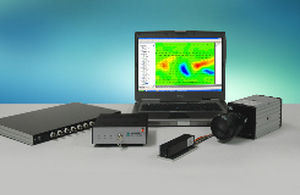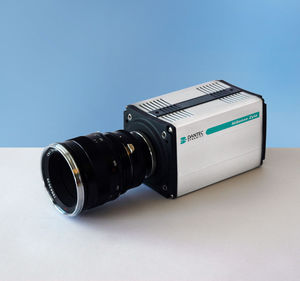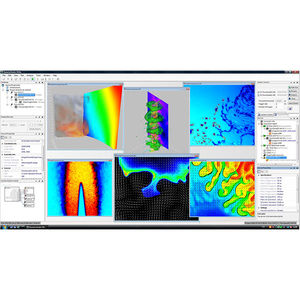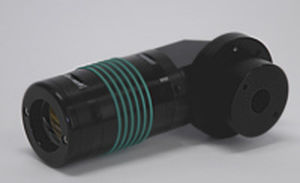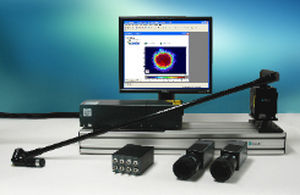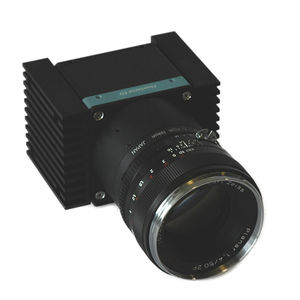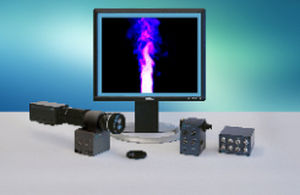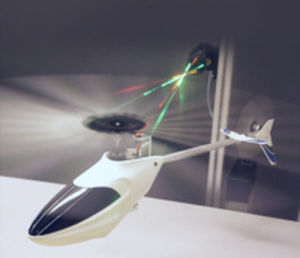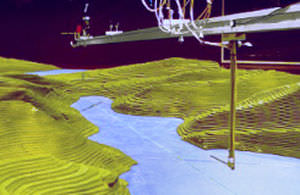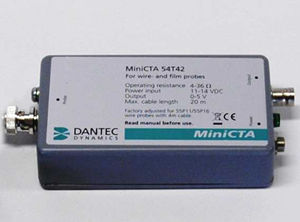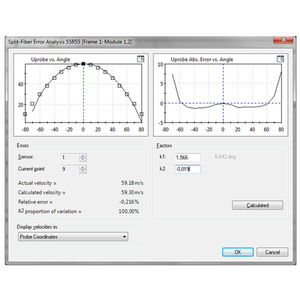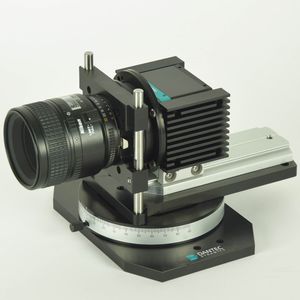
- Metrology - Laboratory
- Metrology and Test Equipment
- Particle measuring instrument
- Dantec Dynamics A/S
Image velocimetry (PIV) measuring instrument particleCCDbenchtop
Add to favorites
Compare this product
Characteristics
- Measured value
- particle, image velocimetry (PIV)
- Technology
- CCD
- Configuration
- benchtop
- Other characteristics
- automatic
Description
Stereo PIV is a method for measuring three velocity components in a plane (2D3C) based on the principle of parallax.
By placing two cameras so that they observe the light-sheet plane from two different angles, you obtain slightly different two-velocity component vector maps from each camera due to the parallax effect .
The differences between them arise from the third, out-of-plane velocity component and the geometrical configuration of the two cameras.
After image calibration, this third velocity component can be evaluated. In addition, the two in-plane velocity components can be recalculated, correcting for parallax errors.
Solution components
- DynamicStudio Stereo PIV software including camera calibration routines that measure and account for perspective distortion arising from the skewed orientation of the cameras, routines to compute the third velocity component from the two camera data sets and presentation of 3-component velocity information.
- Calibration targets. Camera calibration requires calibration images to be recorded in the lightsheet as well as in front of and behind it. DynamicStudio StereoPIV allows automatic recording of these calibration images.
- Scheimpflug mounts. The user has to fine-adjust the angle between the CCD (CMOS) array and camera lens in order to focus correctly. To do this, the so-called Scheimpflug condition must be fulfilled. This is achieved by mounting the cameras on Scheimpflug mounts. DynamicStudio StereoPIV includes a focus-assist tool.
- Multiple camera synchronisation support for image acquisition from two cameras.
Catalogs
No catalogs are available for this product.
See all of Dantec Dynamics A/S‘s catalogsRelated Searches
- Measuring device
- Measuring machine
- Optical measuring machine
- Temperature measuring device
- Automatic measuring device
- Benchtop measuring device
- Non-contact measuring machine
- Laser measurement system
- Geometry measuring device
- Extensometer
- 3D measuring machine
- Optical measuring device
- Gas measuring instrument
- High-speed measuring machine
- PH measuring device
- Shape measuring machine
- Moisture measuring device
- Non-contact measuring device
- Temperature measurement system
- Laser measuring device
*Prices are pre-tax. They exclude delivery charges and customs duties and do not include additional charges for installation or activation options. Prices are indicative only and may vary by country, with changes to the cost of raw materials and exchange rates.



